Alfred Stieglitz: Meet the Artist Who Popularized Photography in America
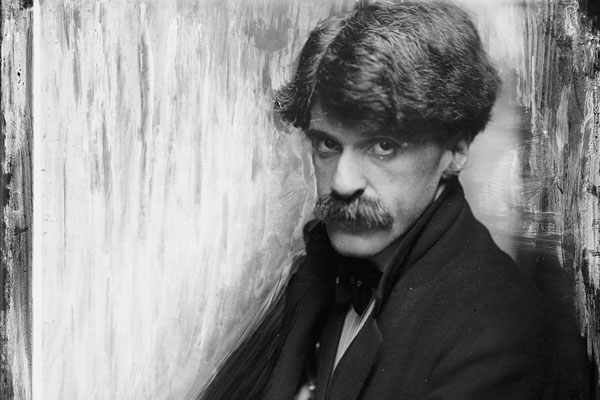
“In photography there is a reality so subtle that it becomes more real than reality.” -Alfred Stieglitz
American photographer Alfred Stieglitz was born in Hoboken, New Jersey in 1864, just before the end of the American Civil War[2]. His family went back to Germany, their home country, in 1881 with hopes that the school system there would challenge young Alfred and his five siblings in a way that the American system had not. While there, Stieglitz was trained as an engineer, and he enrolled in the Technische Hochschule in Berlin, where he was exposed to photography for the first time. He purchased his first camera in 1882 and used it to shoot vistas of the German countryside. He also published photographs and articles in the British magazine Amateur Photographer, thus earning him a reputation among European photography circles, before moving back to the United States in 1890 to live in New York.[1]
There, he led the American Photo-Secessionist Movement, which advocated for photography as a legitimate art form[1]. Stieglitz wanted to bring European artistic methods and mentality to America. In addition to pioneering a new way of looking at photography, Stieglitz spent his life honing his craft and is now considered by some to be the greatest photographer in American history. He was incredibly versatile, also working as an art dealer, an exhibition organizer, a publisher, and an editor, on top of his roles as a photographer and a thought leader.
Having successfully converted photography from a purely scientific medium to one with recognized artistic legitimacy, Alfred Stieglitz is truly a pioneer of American art photography.
Art vs. Science: Pictorialism and the Photo-Secessionists
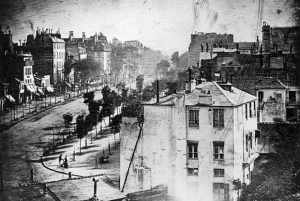
From photography’s introduction to the world by Louis Daguerre in 1839 until the success of the photo-secessionist movement, there was disagreement about the invention’s place in society. While Daguere’s original intention was for photography to be useful in art, travel logs, and architectural records, his invention was increasingly used for scientific observation due to its ability to capture and preserve detailed, objective representations[3]. Scientists quickly realized that photography could gather data that could not be detected by the human eye and then capture that data to be revisited later. Thus, photography became a supplementary medium that was mainly used for scientific study.
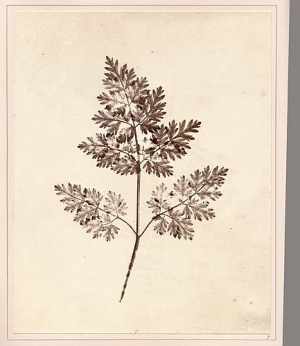

Photography was also rejected as an art form by a number of renowned critics of the arts and sciences. Charles Baudelaire, who is often cited as the “father of modern art criticism,”[4] was particularly against the recognition of photography as an art form. Deeply ambivalent about modernity in general, Baudelaire’s essay “On Photography” was published in the 1859 edition of The Salon[4]. In it, he criticizes photography as “the refuge of every would-be painter, every painter too ill-endowed or too lazy to complete his studies,” arguing that photography’s true place in society is “to be the servant of the sciences and arts”[5].
Baudelaire deeply admired accomplished painters and their works and was concerned for the quality of art and artists in a technologically progressive age. He felt that, if photography was accepted as a legitimate artistic medium, it would degrade the overall quality of the arts, bankrupting artistic genius and balking at the painstaking hands-on work done by traditional fine artists. In his mind, photography was the lazy man’s way of creating art. Those in agreement with him became further convinced that photography had no place as a fine art when Kodak introduced its amateur handheld camera in 1888,[6] which gave everyone the ability to create their own photographs.
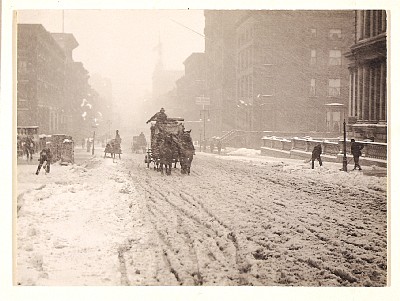
Opposite critics like Baudelaire in the debate between art and science were the photo-secessionists, founded and led by Alfred Stieglitz. This group of photographers was inspired by the aesthetic style of pictorialism, which used a painterly approach and often involved the manual manipulation of photographs[7]. The attempt to mimic the aesthetics of paintings was intentional, as painting has been established as a fine art for centuries[7]. Pictorialism was largely characterized by romanticism and sentimentality with an emphasis on shapes, forms (the artistic term for three-dimensional shapes), and soft focus.
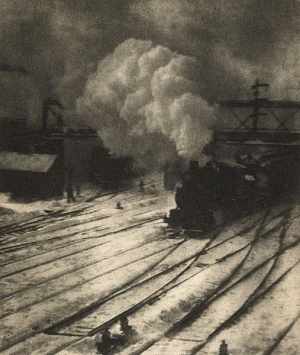
Though inspired by pictorialism and the painterly aesthetic, the photo-secessionists sought “to bring photography from its own aesthetic, moving it further away from the realm of painting”[7]. They focused on the technical skill and creative possibilities that photographers possessed, with particular regard for labor-intensive photographic processes, such as gum bichromate printing, which involved hand-coating papers with homemade emulsions and pigments[6]. With these things in mind, the secessionists sought to counteract the “army of weekend ‘snap shooters’ [that had] invaded the photographic realm” and show the art world that the professional photographer’s work was just as painstakingly hands-on as that of any other fine artist.
Stieglitz pursued artistic legitimacy with all of the intensity and strategic movement of an experienced hunter. For him, displaying his images on the walls of a gallery was akin to the taxidermy buck head that one might find on the wall of a woodman’s home. To successfully present his work as art was to shoot down the idea that photography would never belong as an art form.
The group held exhibitions of their own work in a space called the Little Galleries of the Photo-Secession and published a quarterly magazine edited by Stieglitz called Camera Work[6]. Though Stieglitz and his group were not the first to champion for photography as a fine art (that honor belongs to celebrated self-imagist F. Holland Day, who was invited to join the photo-secessionists but refused the offer), they were the ones who successfully helped photography onto the same plane as painting and other art forms.
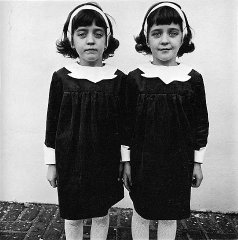
The photo-secessionists were some of the first to see photography for what it truly is and always has been, a medium with verifiable artistic merit. Like painters and other fine artists, all art photographers possess an artistic vision, which they use to help viewers see the world differently. For Stieglitz, this meant using his art to encourage the accepted legitimacy of photography as an artistic medium. For photographers like Nan Goldin and Diane Arbus, this meant shedding light on the abnormal and the grotesque. And for photographers like Sally Mann, this meant celebrating the human body and the purity of the human spirit. While these are just a few artists that come to mind, all photographers have their own unique visions, and each of their photographs occupies its own space within these visions, within history, and within the art realm. Still today, photographers work painstakingly to produce their best work, and with the advent of digital photography and computer programming, artists’ creative possibilities have expanded significantly.
Alfred Stieglitz: The Pictorialist
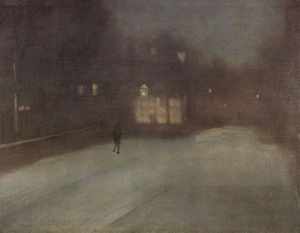
Stieglitz constantly “pressed [his photographs] to mean something beyond themselves”[8]. Ever the perfectionist, he worried over genre scenes and surfaces, choosing subjects akin to those chosen by successful fine artists and strove to achieve a painterly aesthetic. He worked tirelessly, using labor-intensive processes, to produce the compositions, hues, and textures that were reminiscent of the work of masters like Whistler, who was famous for his paintings of fog, water, and evening light[8].
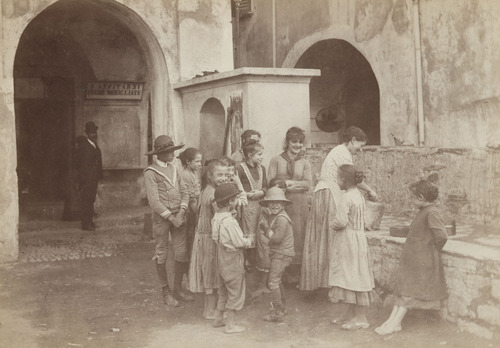
Stieglitz’s image “A Wet Day on the Boulevard, Paris” (1893), is a carbon print on textured watercolor paper that actually looks rippled by rain[8]. The faded background evokes the fog that characterizes many of Whistler’s works, while the well-dressed people, horse and buggy, and charming shops that make up the composition are much like what one might see in a painting like “A Sunday on La Grande Jatte” (1884) by Georges Seurat. While painters like Whistler could create foggy scenes from their own minds, photographers like Stieglitz needed to do some extra maneuvering to make real weather conditions work to their advantage. Stieglitz was well-known for capturing conditions (such as darkness, fog, snow, and rain) that others could not.
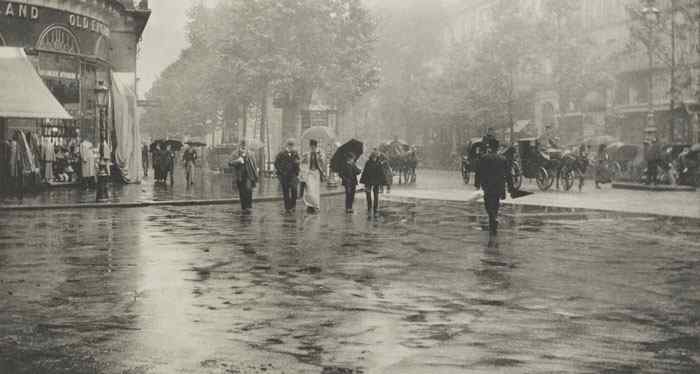
While Stieglitz was a masterful technical photographer, he used his skills as a pictorialist to achieve something rather paradoxical. He simultaneously sought to establish his legitimacy and originality as an artist while mimicking what other fine artists had already accomplished. He thought outside of the box while still striving to maintain a comfortable presence within it.
Alfred Stieglitz: The Later Years and the Move to Modernism
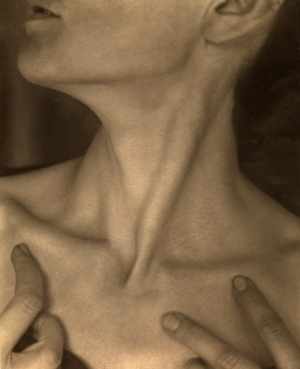
Stieglitz became a modernist around 1910, moving away from the softness of pictorialism[8]. His work became smoother and took on the sharp, austere style that characterized modernist photography. Stieglitz also met “painter of womanhood” Georgia O’Keeffe around that time, and the two began a relationship[1]. In 1917, he began the Georgia O’Keeffe- A Portrait series, which consisted most notably of nude images of O’Keeffe (forty-five out of the series’ total 329 photos were nudes)[1]. Others depicted her fully clothed, and others still were images of her cropped, fetishized body parts. This series introduced O’Keeffe to the public, and she became famous for Stieglitz’s images of her as well as for her own art. The two married in 1924[1].
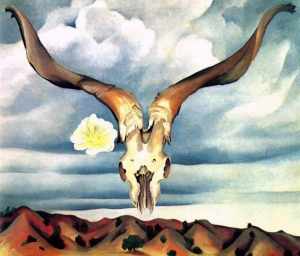
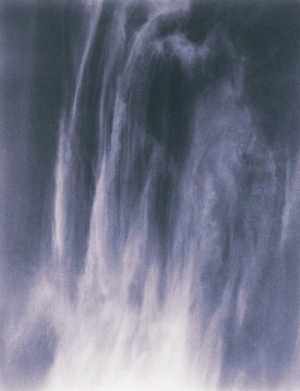
Between 1922 and 1935, Stieglitz worked on his Equivalents series[1]. Turning his camera towards the sky, Stieglitz produced close-up images of clouds, abstractions that reflected the modernist style. The series was characterized by its careful cropping as well as its experimentation with shape and composition. Some of the images are also notable for their strong contrast. Stieglitz called his series Equivalents because he felt that abstract lines, forms, shapes, and colors could represent corresponding inner states and emotions, “vibrations of the soul”[9].
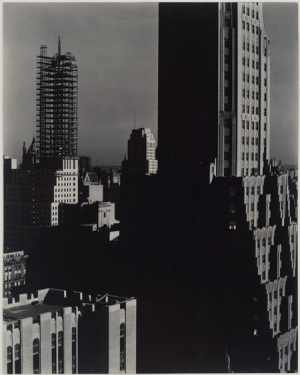
During the final years of his life, Stieglitz worked chiefly on maintaining his gallery, making photographs less and less frequently as his health declined[2]. His final series was made up of photographs taken through the windows of his gallery, and it synthesized the various stages through which his art progressed throughout his life[2]. Characterized by high contrast and geometric forms, it also emphasized his own retreat from the busy streets of New York City. Stieglitz died in New York in 1946[2].
Legacy
With bold determination and a discerning eye, Alfred Stieglitz led photography into the realm of art and fostered its acceptance as an artistic medium. He popularized photography, and the evolution of his work has placed him among the most prolific photographers in American history.
Those who appreciate photography as an art or enjoy creating artistic images themselves can thank Alfred Stieglitz for making photography what it is today.
References
[1]”Alfred Stieglitz: American Photographer and Publisher.” The Art Story, (2015).
[2]Lisa Hostetler, “Alfred Stieglitz and American Photography.” The Metropolitan Museum of Art, (October 2004).
[3]”Science Photography.” Nature.com, (2014).
[4]”Charles Baudelaire, On Photography, from The Salon of 1859.” California State University, Sacramento, (n.d.).
[5]Charles Baudelaire, “On Photography.” California State University, Sacramento, (1859).
[6]Lisa Hostetler, “Pictorialism in America.” The Metropolitan Museum of Art, (October 2004).
[7]”Photography as Art: Pictorialism to Photo Secession.” California Museum of Photography, (1999).
[8]Sarah Boxer, “PHOTOGRAPHY REVIEW; The Evolution of Alfred Stieglitz, Ever the Perfectionist.” The New York Times, (August 2002).
[9]”Equivalent (Series),” The Phillips Collection, (n.d.).
What do you think? Leave a comment.











Imagine carrying around an Arri Alexa recording the images of everyday life back in those times.
Some enlightening glimpse of Trans-Atlantic history of Photography & art at the beginning of last century!
The story of Stieglitz and Georgia is what inspired me to fall in love with photography as a young man 55 years ago.
Very interesting. I always enjoy articles where the writer has taken the time to dig for firsts or to introduce us to pioneers. Also, I appreciatw how you have taken the time to detail a North American as opposed to one of the European artists (with whom I am more familiar). Great work
The selection of photographs for this article are awe inspiring. Wet, looks like a painting; Neck, is so alive and vibrant. A Good Joke, I am waiting for the people to start walking around and completing their daily routine. Equivalent, has so much emotion to it and the shadows are so foreboding on Looking Northwest. Thank you for this visually stimulating article.
Don’t you wished you could take a trip back in time?
I first heard about Stieglitz when reading about Ansel Adams. Adams went to New York, cowboy hat & all, and showed his prints to Stieglitz. Stieglitz looked at the prints, Adams standing there hat in hand, his 1st real critic and a leader in NY. Handed the pictures back to Adams and said simply “Your photographs are welcome here anytime”. For Adams, if was like God pronouncing his life worthwhile.
Thank you for that! I’ve never heard that story before, but I’m so so glad that I do now.
“I did not see why a photograph could not be a work of art” -Alfred Stieglitz
The Father of Modern Photography.
My favorite images are of the steaming horses, the Steerage and his own self portraits, such insightful photographs!
The inventive early heroes of the movement to gain recognition for photography as an artform in itself.
I appreciate my photography professor who suggested his work.
As do I.
Very nice.
His pictures would be much better if he used Instagram.
I’m starting to really appreciate Stieglitz’s cloud images, “Equivalents.” Such a great series and the beginning of conceptual photography.
Thank you for this.
Obsession, passion or call it another name is a dream.
If I ever needed a reason to never go out and take another photo, it would be that I am too busy sitting here reading all the great content on The Artifice about arts and the great photographers of the past.
stunning imagery
He’s my favourite photographer… I just love his photos!
Very fine tribute to Stieglitz!
Amazing Mr Stieglitz, truly an artist in his own right!!
to me, an amateur, it looks nothing different from any other poster photo taken by some nameless and unfamous photographer who few money for it…
That’s like comparing the plays of Shakespeare to “50 Shades of Grey.” Stieglitz is one of the greatest photographers in history and arguably the greatest American photographer to ever live. He is considered as such by pretty much everybody who knows anything about art.
You can’t make a comment like that without backing it up and expect to be taken seriously.
What what an extraordinarily indepth commentary about Steiglitz – capturing the evolution of photography as a whole in the past 109 years. Well done! I learned a lot! Thank you!
As a photographer (or rather aspiring,) I always wondered about the history of the art and how it came to be. This was a fantastic article and I learned a lot. It reminded me of another article I recently read that explored the relationship between a script and a film and if the written form of movie is actually a piece of literature. Photography to me is the script of the fine art world. There isn’t a lot of medium usage (at least since photography became digital) but to made a picture aesthetically pleasing there are a lot steps to take that are akin to making a brushstroke just right.
This is really great information; I loved reading this. I practice photography myself and like trying to make them look more like paintings–I didn’t know there was a term for that until now. So cool 🙂